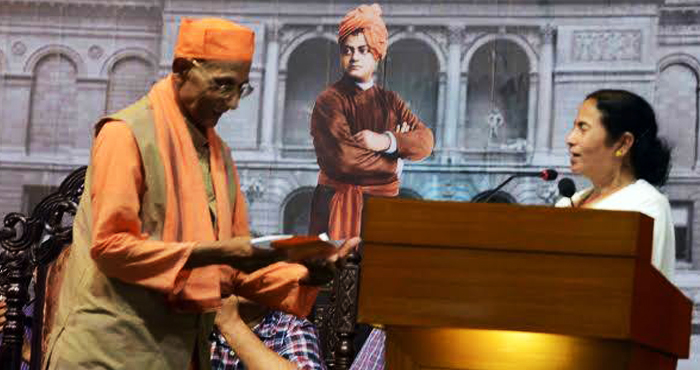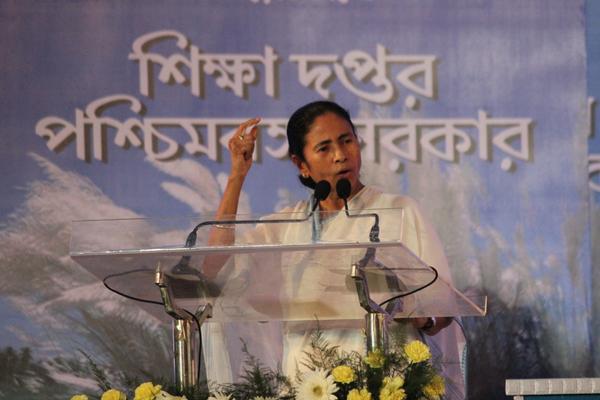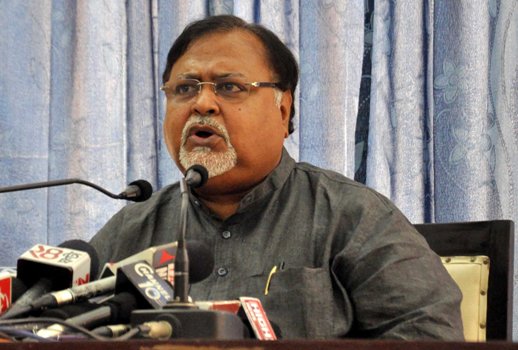What the Trinamool Government understood pretty early is that one of the primary ways to improve the state of school education (in state government schools) is to majorly improve the intake of qualified teachers. This, of course, implies the fact that the expenditure also had to increase; and which the Government has done, proving its intent to produce better citizens from the State.
The Left Front Government left education in the doldrums
That the state of education during the Left Front rule had gone down, there is no doubt. Numbers prove it. In 1981, the rank of West Bengal, according to the state of education, was below 16 other States. In 2011, after 30 years, West Bengal came in after 19 other states. Hence, after 30 years, the State had gone down instead of improving.
Secondly, according to the 1981 census, the percentage of educated people in the State was 5% higher that of the all-India average. According to the 2001 census, this gap had narrowed down considerably, to 3%.
Thirdly, according to a 1993 report, the percentage of students who left school after primary school was 36%, compared to the all-India average of 35%; therefore, a negligible difference. After 12 years, in 2005, the percentage for West Bengal did come down to 24%, but the all-India average came down to a very encouraging 15%; therefore, the difference widened from a mere 1% to 9%. Many economically weaker states, including the so-called BIMARU states of Bihar, Madhya Pradesh, Rajasthan and Uttar Pradesh, have overtaken West Bengal in this respect.
School infrastructure
Though it is not possible to turn around the deplorable situation that the State finds itself in so quickly, even in this short span of time, the Trinamool Government has managed to bring about a positive change in the situation.
Among its activities have been building new schools, adding classrooms to existing schools, recruiting a large number of teachers, building toilets, both for boys and girls, giving grants for setting up computer systems and improving libraries, etc.
The Left Front Government, during its last three years in power, from financial years 2008-09 to 2010-11, had an expenditure of Rs 2,503,53,00,000 on school education, or Rs 834 crore per year on an average; whereas the Trinamool Government, during its first three years, spent Rs 8,096,88,00,000, or Rs 2699 crore per year on an average, which is 223%, or 3.23 times, more.
Hence, naturally, the scenario of education in government schools has improved tremendously. During its last three years, the Left Front Government constructed only 184 primary schools whereas the Trinamool Government, during its first three years, constructed 362 primary schools.
The comparative data on school education is detailed below:
- Plan expenditure: Rs 2,503.53 crore (last three years of Left Front), against Rs 8,096.88 crore (first three years of Trinamool) – an increase of 223% or 3.23 times
- New primary schools: 184 (last three years of Left Front), against 362 (first three years of Trinamool) – an increase of 97% or 1.97 times
- New higher primary schools: 497 (last three years of Left Front), against 2454 (first three years of Trinamool) – an increase of 394% or 4.94 times
- English-medium model schools: 12 (first three years of Trinamool; this was introduced by the new Government)
- Upgrading Madhyamik schools to Higher Secondary: 502 (last three years of Left Front), against 1397 (first three years of Trinamool) – an increase of 178% or 2.78 times
- Mid-day meals in primary schools: 86.84% schools (last three years of Left Front), against 92.24% schools (first three years of Trinamool) – an increase of 5.4%
- Mid-day meals in higher primary schools: 58.81% schools (last three years of Left Front), against 87.4% schools (first three years of Trinamool) – an increase of 28.59%
- Construction of general toilets: 89.79% schools (last three years of Left Front), against 96.52% (first three years of Trinamool) – an increase of 6.73%
- Construction of toilets for girl students: 58.1% (last three years of Left Front), against 80.24% (first three years of Trinamool) – an increase of 22.15%
- Compared to the last three years of the Left Front, the first three years of Trinamool have seen a 5.4% increase in enrolment in primary schools
Other achievements
- As of March 31, 2014, 40,113 classrooms have been constructed
- Rs 50,000 as library grant has been given to each of 1,107 schools upgraded from Madhyamik to Higher Secondary
- Rs 2 lakh as laboratory grant has been given to each of 3,717 schools upgraded from Madhyamik to Higher Secondary
- To make students more IT-savvy, computers and related equipment have been provided to 2600 Madhyamik and Higher Secondary schools, under the Government’s ICT scheme
- 74,650 primary school teachers have been enabled help in completing the Diploma in Elementary Education (D El Ed) course
- 27,894 teachers have been enabled help in completing Bachelor in Education (B Ed) course through distance learning mode
Human resource in education
In terms of human resource too, the Trinamool Government has achieved quite a lot during its short time in power. Among the achievements are the following:
- Appointing almost 50,000 teachers in primary and Madhyamik schools
- 1.094 para-teachers for Santhali language have been appointed in the districts of West Medinipur, Bankura and Purulia
Thus, there is no doubt that despite the financial constraints (huge inherited debt from the Left Front Government), during its first three years in power, the Trinamool Government, in the sector of school education, has achieved things which are comparable to those achieved in the almost last 10 years of the Left Front Government.










